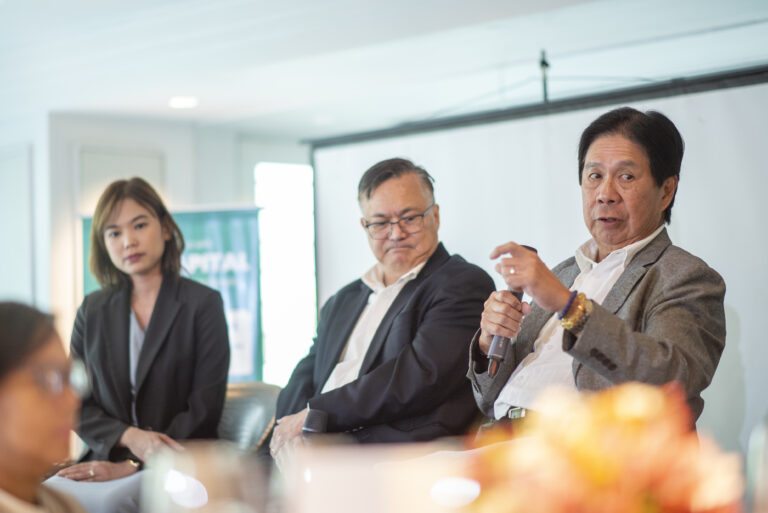Key Takeaways
Need ₱200K–₱5M+ capital? Government loans for small businesses in the Philippines help SMEs expand, recover, or scale operations with flexible terms.
- SB Corp RISE UP: Loans up to ₱5M, 3-year terms
- LandBank I-RESCUE: ₱300K–₱5M, 5-year terms with grace periods
- DBP RESPONSE: ₱500K+ for sectors like manufacturing
- LGU Programs: Local loans (ex., Turismo Asenso) for ₱200K+ needs
Access to capital can make or break a small business, especially when you’re looking to grow beyond the micro-loan range of ₱200K to ₱300K. In the Philippines, micro, small, and medium enterprises (MSMEs) dominate the business landscape, accounting for 99.6% of all registered establishments and contributing nearly 67% of total employment, according to the 2023 Philippine Statistics Authority.
For SMEs aiming to expand operations, invest in equipment, or scale production, you must understand government financing options.
This blog outlines the key government loans available to small businesses in the Philippines, including their eligibility requirements and the practical steps for application. It also shows how Unicapital’s tailored business loans and securities solutions can complement these programs, helping you secure working capital or growth funding efficiently.
Top Government Loan Programs for Philippine SMEs
Government-backed loans provide critical support for SMEs seeking capital to expand, recover from crises, or scale operations. Below is a breakdown of the most accessible programs and how they can help your business:
1. DTI’s Small Business Corporation (SB Corp): RISE UP Program
The Resilient, Innovative, Sustainable Enterprises (RISE UP) Program, offered by the Department of Trade and Industry’s (DTI) SB Corp, helps SMEs recover from crises or unforeseen setbacks. The program provides loans of up to ₱5 million with low interest rates and a repayment term of up to three years.
These loans are best suited for working capital, equipment purchases, or growth initiatives. Interested applicants can apply directly through the SB Corp’s online portal.
For example, a Manila-based retail business can use a RISE UP loan to restock its inventory after a typhoon, and pair it with Unicapital’s working capital loan to hire the seasonal staff it needs to get back on its feet.
2. Land Bank of the Philippines: I-RESCUE Lending Program
The Interim Rehabilitation Support to Cushion Unfriendly Economic Impact of COVID-19 (I-RESCUE) Program, offered by the Land Bank of the Philippines, provides loans ranging from ₱300,000 to ₱5 million.
This program stabilizes cash flow and supports businesses in recovering from economic disruptions, with a repayment term of up to five years, which includes grace periods on principal payments. Applications are processed directly through LandBank branches, with a typical processing time of four to six weeks.
3. Development Bank of the Philippines (DBP): RESPONSE Program
The Restoration and Invigorating Businesses through Loans (RESPONSE) Program from the DBP is specifically designed for SMEs in key priority sectors, including Manufacturing, Transport, and Healthcare. This program offers loans starting at ₱500,000 with a repayment term of three to five years. Interested applicants can apply directly through any DBP lending unit.
4. LGU and Special Government-Backed Loan Programs
In partnership with the DTI and Department of Finance (DOF), local governments offer various financing programs for small businesses. For example, the Turismo Asenso Loan Program (TALP), launched in April 2025, provides up to ₱20 million for tourism SMEs, while many provinces and municipalities offer their own initiatives with capital ranging from ₱200,000 or more for micro-entrepreneurs.
To qualify for these loans, you’ll typically need to submit a Barangay Micro Business Enterprise (BMBE) Certificate, a Mayor’s Permit, and proof of operations. Your local government’s business development office is the best resource for detailed information on programs.
Government Loan Programs at a Glance
| Program | Loan Amount | Interest Rate | Repayment Term | Eligibility Highlights |
| RISE UP (SB Corp) | Up to ₱5M | Low | Up to 3 years | DTI/SEC/CDA registered, 1+ year operations |
| I-RESCUE (LandBank) | ₱300K–₱5M | Low | Up to 5 years | BIR compliant, crisis recovery focus |
| RESPONSE (DBP) | ₱500K+ | Low | 3–5 years | Priority sectors (manufacturing, transport) |
| LGU Programs | ₱200K–₱20M | Varies | Varies | Local registration, sector-specific focus |
How to Apply for Government Small Business Loans
Applying for government loans for a small business in the Philippines can be straightforward if you prepare carefully. Follow these steps:
1. Check eligibility criteria
Before applying, you should verify that your business is legally registered with the DTI, SEC, or CDA. Additionally, ensure you are BIR compliant and have at least one year of operational history.
Keep in mind that some loan programs have sector-specific requirements, such as the TALP, which is exclusively for tourism businesses. For larger loans of ₱300,000 or more, be prepared for additional financial checks.
2. Prepare documentary requirements
Gather all the necessary documents to avoid delays. You’ll need your most recent Income Tax Returns (ITR) or Audited Financial Statements (AFS) and valid, government-issued IDs for all business owners. Be sure to have your business permits ready, including your Mayor’s Permit and BMBE Certificate.
You should also prepare your bank statements from the last 6 to 12 months, along with any collateral documents if they’re required for a higher loan amount. Lastly, have a business plan ready that clearly outlines how you’ll use the funds, such as for expansion or equipment purchases.
3. Submit your application
Once your documents are ready, you can submit your application. For the RISE UP program, apply via the SB Corp’s online portal. If you’re applying for the I-RESCUE or RESPONSE programs, you’ll need to submit your documents directly to a LandBank or DBP branch or their MSME lending units. For LGU programs, be sure to check with your local business development office for their specific process.
Remember to double-check all forms and documents before submission to avoid any delays.
4. Undergo credit and business evaluation
Lenders will evaluate your business’s financial health, repayment capacity, and overall viability. For loans above ₱300,000, you should expect site visits or interviews as part of the due diligence process. The entire loan processing period typically takes three to six weeks.
5. Receive loan approval and terms
You’ll receive a detailed document outlining the loan’s specific terms. It includes the approved loan amount, the interest rate, a clear repayment schedule, and any applicable grace periods. You must carefully review these terms to ensure they align with your business’s cash flow and financial projections.
6. Disbursement and fund utilization
The funds are disbursed directly to your designated bank account. Be sure to use these funds for their intended purpose, such as for business expansion or purchasing new equipment. You should also keep detailed records of your expenditures, as some loan programs require you to submit regular reports to ensure compliance.
7. Consider complementary financing
Government loans often have low interest rates but can come with longer processing times. To get faster access to capital, consider Unicapital’s financing options, which can be used to complement a government loan.
For instance, Unicapital’s business loans can be approved in just 3 to 5 days, providing working capital of up to ₱10 million. The company also offers bridge financing to cover cash flow gaps while you’re waiting for a government loan to be approved.
Fuel Filipino Entrepreneurship
Government loans provide low-cost capital to help your SME expand, recover, or scale. By strategically selecting the right program for your needs, meticulously preparing the required documents, and applying early, you can position your business for success.
When additional capital is needed, consider Unicapital’s business loans in the Philippines. Our flexible solutions complement government financing, so you can meet project demands and never miss a growth opportunity.
Eyeing expansion but short on capital? Start your application for a government loan today and contact Unicapital to bridge any immediate funding gaps.
FAQs
1. What government loans are available for small businesses in the Philippines?
Government loans include DTI’s RISE UP (up to ₱5M), LandBank’s I-RESCUE (₱300K–₱5M), DBP’s RESPONSE (₱500K+ for key sectors), and LGU programs (ex., Turismo Asenso). These loans support SMEs in recovery, expansion, or operational needs.
2. What are the requirements for a small business loan from government programs?
Eligibility typically requires:
- Business registration (DTI/SEC/CDA)
- BIR compliance
- 1+ year of operation
- Financial statements (ITR/AFS)
- Collateral (for larger loans)
3. How do I apply for a government small business loan?
Apply through:
- SB Corp’s online portal
- LandBank or DBP branches
- Participating LGUs
Submit registration documents, financial statements, and a business plan.
4. How long does it take to process government loans for SMEs?
Processing times vary:
- RISE UP: 4–6 weeks
- I-RESCUE: 3–5 weeks
- RESPONSE: 5–7 weeks
Larger loans may require additional checks.
5. Can private lenders complement government loans for SMEs?
Yes. Unicapital’s business loans offer faster approvals (3–5 days), working capital up to ₱10M, and bridge financing. Explore Unicapital’s solutions to complement government funding.







